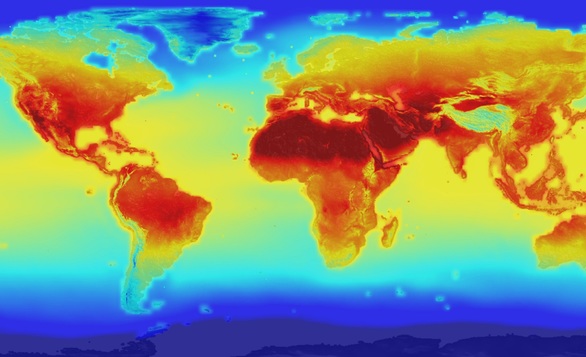Extremely hot days, when temperatures soar to 95 degrees Fahrenheit or higher, can be miserable. Crops wilt in the fields. Electric grids strain to keep pace with demand. People are at greater risk of dying. And those hot temperatures are expected to be much more frequent in the coming decades.

30-jun-2017
By Brad Plumer and Nadja Popovich
The map above, based on a new analysis from the Climate Impact Lab, shows how 95-degree days (35 degrees Celsius) are expected to multiply this century if countries take moderate climate action. In this scenario, countries would take some measures, but not drastic ones, to curb emissions - roughly the trajectory of the current pledges under the Paris climate agreement.
The resulting global warming would still cause significant shifts for many cities. In Washington, from 1986 to 2005, an average of seven days each year had temperatures of at least 95 degrees. By the end of the century, the city can expect 29 of these extremely hot days per year, on average. (The likely range is 14 to 46 hot days per year.)
Phoenix is used to the heat, averaging 124 days per year with 95-degree weather. At the end of the century, that's expected to increase to around 155 days - an extra month of extreme temperatures each year. Madrid would go from eight severely hot days per year to 43, Beijing from nine to 35.
The swings are even greater closer to the equator. New Delhi, India's capital city, has historically averaged 105 days with temperatures of at least 95 degrees each year. That's likely to rise to a range of 137 to 200 days per year.
Things could get worse if countries fail to take action
If the world's nations took no action on global warming, and emissions continued to rise at the same pace they did in the first decade of this century - with total global warming of 7.2 degrees Fahrenheit or more by the end of the century - extremely hot days would become much more commonplace.
Complete article HERE
Source: The New York Times